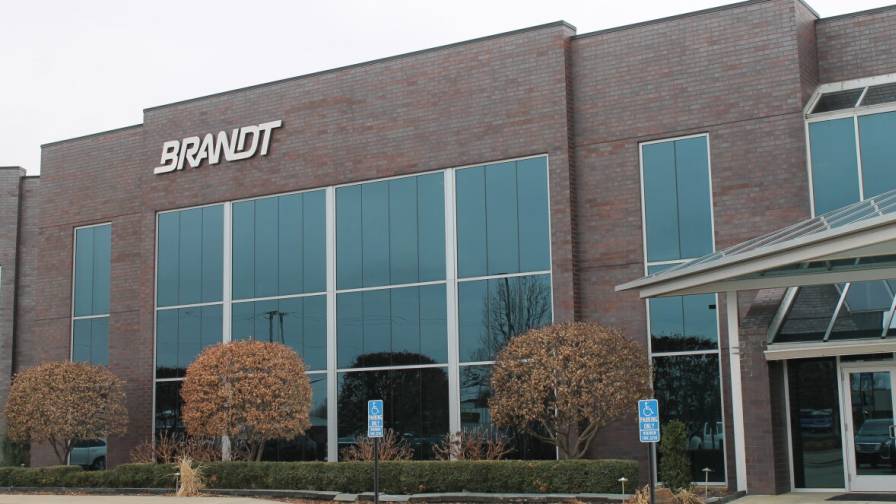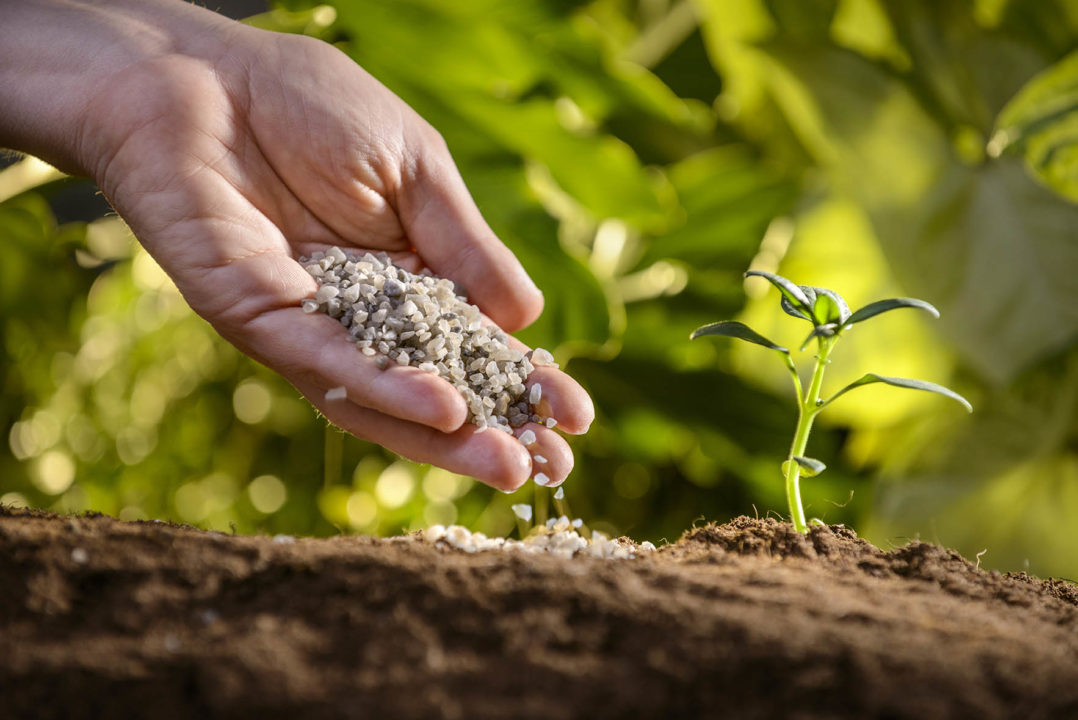Herbicide Research: Going Small For Big Results
For nearly a decade, experts have been proclaiming that nanotechnology is on the verge of revolutionizing the food processing and packaging industries. But nanotechnology shows its most promising breakthroughs much earlier in the food production chain — on the farm.
Crop protection companies have started to manufacture products containing particles of active ingredients that are at or near the nanoscale definition of 1 nm to 100 nm. At this size, they are 2,000 to 50,000 times smaller than particles in conventional crop protection products. A nanotechnology herbicide, for example, will contain many trillions of particles of active ingredient per litre. The extra surface area created by the reduction in particle size boosts potency, accelerates uptake by the plant, increases solubility in the spray tank and reduces or even eliminates the risk of settling and separation. In addition, nanotechnology is spawning a variety of breakthrough products such as herbicide sensors that can dramatically reduce the amount of product used and toxicity of herbicide and pesticide treatments.
Nanoparticles are created using one of two methods. One involves grinding the crop protection products down to a couple of microns in a single pass-through a large disk mill (300 or 500 liter machine) for the mean PS. The method used by most crop protection manufacturers to develop nano-sized particles is through the comminution of larger, coarser particles, which is referred to as the dispersion or top-down method. But getting larger particles down to submicron particle size requires high energy density, achieved through wet comminution with a media mill.
Media milling — or grinding — is the most well-established manufacturing method for nanoparticle production. Stirred media mills, for example, are used in many different industries to reduce particle size, including lithium ion battery manufacturers, ceramic manufacturers, electronic component manufacturers and more. Nanogrinding with a stirred media mill offers key benefits for crop protection manufacturers including excellent particle size control, comparative cost effectiveness and equipment scalability.
Stirred media mills continue advancing, and agitator design is an important consideration. The system creates grinding and dispersion by agitating the beads with the pins or pegs on the agitator shaft. Uniform compression throughout the chamber’s length is key to this process. This concept results in total utilization of the media charge and mill capacity for greater efficiency in particle size reduction.
Another key consideration should also be keeping particles free from contamination during the milling process. Metal grinding equipment can slough off metal particles leading to accidental contamination, affecting the final quality agrochemical. Ceramic mills, free of metal grinding shafts and chambers, can prevent this contamination and ensure that the performance of the coatings isn’t compromised.
Out Of The Weeds
The potential of nanotechnology to create crop protection products with revolutionary properties is prompting many of the world’s largest chemical companies such as Syngenta Crop Protection, BASF and Bayer CropScience to speed up their commercial development. Also, DuPont Crop Protection has provided expertise and support for the U.S. National Nanotechnology Initiative, a 10-year $12 billion research program to date.
These companies have been testing the performance of crop protection products containing particles of conventional size that can be boosted simply by adding a catalyst containing nano-scale particles. BASF and Embrapa, the Brazilian Agricultural Research Cooperation, jointly developed herbicide-tolerant soybeans that were green-lighted by the CTNBio, the Brazilian Biosafety Technical Commission. This decision will allow BASF and Embrapa to bring the new production system with the brand name Cultivance to Brazilian farmers. Both companies are now seeking the approval for this technology in key export markets, such as China and the United States. The Cultivance Production System combines herbicide-tolerant soybean varieties with BASF’s broad-spectrum imidazolinone class of herbicides, tailored to regional conditions — and was made possible in part by nanotechnology.
The Cultivance Production System, which combines herbicide-tolerant soybean varieties with BASF’s broadspectrum imidazolinone class of herbicides, tailored to regional conditions.
According to statements on BASF’s Web site, the new technology offers growers a production system that effectively manages a broad spectrum of weeds. Designed for post-emergence application, Cultivance herbicides provide growers with convenience and flexibility to apply the herbicide as needed to control weeds during the first few weeks of crop growth. A single application provides season-long control of both broadleaf and grass weeds, including those difficult to control. Fewer herbicide applications per hectare will reduce the use of machinery and labor, reducing costs for growers as well as decreasing the release of CO2 into the environment.
For the past five years, however, crop protection research has been focusing more so on ways to use nanotechnology to attack a weed’s seed coating and prevents weeds from germinating. This approach destroys the weed even when it is buried in soil and prevents it from growing in even the most favorable conditions, say the researchers. Due to the small proportions of the nano-scale herbicides, they can easily blend with soil and attack seeds that are buried below the reach of tillers and conventional herbicides. This also allows growers to prevent the spreading of weeds that will multiply through stem cuttings from tilling.
Sensor Use
Researchers at the University of Texas-El Paso confirm that plants can also soak up nanoparticles that could be industrially harvested. In one particle farming experiment, alfalfa plants were grown on artificially gold-rich soil; gold nanoparticles in the roots and along the entire shoot of the plants that had physical properties like those produced using conventional chemistry techniques but are expensive and harmful to the environment. With nanotechnology, the metals are simply and easily extracted just by dissolving the organic material.
Thanks to nanotechnology, the agriculture industry may also be able to use new highly efficient devices or sensors to help control release of crop protection products. Also known as precision farming, this process uses nanoparticles to store and release pesticides/herbicides or fertilizers in a controlled manner. Nanoclay capsules, for example, can store fertilizers and release them slowly, allowing only one application during the cycle of the crop, thus saving time and fuel for the grower.
Furthermore, nanosensors can help growers make better growing decisions and respond faster to potential problems, as they can help monitor soil moisture, temperature, pH, nitrogen availability and measure crop growth. They can even help growers diagnose diseases before symptoms are visible or help them carry out microbiological tests quickly, seeing results within an hour.
Growing In Our Fields Tomorrow
Like all things, new nanotechnology approaches need to be carefully introduced for agricultural applications only after thorough evaluation of the benefits and risks, and identification of stewardship practices to accompany practical implementation. Yet there is great promise in the field of agrochemicals, farming, and food production with new products being trialed around the world.
Could nanotechnology be the key to producing commercial foodstuffs with strange and fun properties like soda that changes colors or cereal bars that adjust their sugar content to accommodate individuals’ various dietary restrictions?
While nanotechnology appears to have the potential to increase the sales appeal of many foods in developed countries, is it a magic wand? Some questions still remain in terms of long-term safety.
However, if — like research suggests — nanoherbicides can decrease or eliminate the effect of excess toxins on the environment, and allow growers around the world to increase their yields at lower costs so that third-world countries can someday feed their citizens — well, then that truly is magical.





